Famous Folk Dance of Karnataka: [20+ Exciting Facts to Know]
By Srivatsa sai Krishna |
Date 05-12-2024
![Famous Folk Dance of Karnataka: [20+ Exciting Facts to Know] Karnataka Folk Dance](/_next/image?url=https%3A%2F%2Fcdn-cms.orchidsinternationalschool.com%2Fblog%2Fkarnataka-folk-dance.jpg&w=1920&q=75)
Table of Contents
Admissions Open for
Karnataka is located in the southern heart of India and is known for its rich cultural heritage regarding folk dances. People in Karnataka celebrate life, festivals, and special events through these creative and lively art forms. The folk dance of Karnataka are an awesome way to learn about Karnataka's history and culture. Read how our dance curriculum has tied up with preserving Karnataka's rich cultural heritage in its folk dances as well.
In this blog, we will talk about Karnataka's best folk dances, their significance, and what makes them unique.
Overview of Karnataka’s traditional dance forms
The traditional folk dance of Karnataka depict beautiful combinations of rhythm, music, and dramatic expression. They are saturated by various historical, religious, and social practices existing there. It is a cultural conveyance, and stories meant to be passed on through generations. These dances amuse but also act as an active repository of state wealth, keeping ancient culture alive. Through their dramatic choreography and colorful costumes, they open a window into the soul of Karnataka to deeply evoke a sense of identity and community among its people.Indian culture is very rich, and these dances are a part of it. Find out more about Indian folk dances and how they have been passed down over time.
Professional folk dance
The traditional dance forms of Karnataka depict beautiful combinations of rhythm, music, and dramatic expression.
Yakshagana: The Folk Dance Theatre
Yakshagana (in Kannada: ಯಕ್ಷಗಾನ) dance, a traditional folk dance of Karnataka, is pretty famous in the coastal districts of Udupi and Dakshina Kannada of the state. It is a dance drama known for a form that has elaborate costumes, bright makeup, and vigorous performance.
Origins and History
- During the 16th century, Yakshagana was first performed in Udupi. Over time, it spread to other parts of coastal Karnataka and eventually became performed there.
- Yakshagana is similar to Kathakali and Chau, but it stands out due to its origins in the coastal traditions of Karnataka and its vibrant music, dance, and dramatic performances.
- Epics from Hinduism, such as the Ramayana and the Mahabharata, are the subject of this fascinating artistic style.
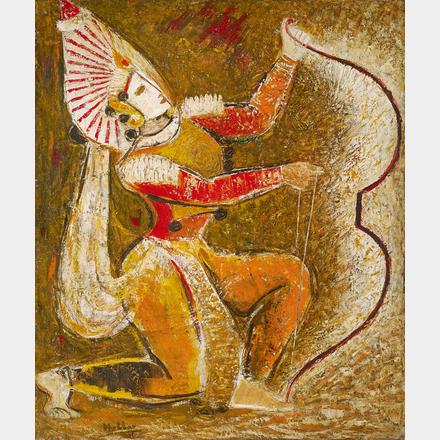
Yakshagna performed in temples in the 16th Century
Performance Style
- Yakshagana is performed on small stages called pandals, and there are specific rules for how to move. The actors come in from one side and leave from the other, making the performance very well-organized and simple for children to understand. Parents can talk about how these traditions make the stories more disciplined and fun.
- They will be able to always remember being in character even during scenes of heavy argument or action. In this way, they learn commitment, concentration, and crystal-clear communication-very beneficial for kids. Explore our Yakshagana-Inspired activities that help develop these traits.
- The storyteller (locally called bhagawatha) sings and tells the story, and actors dance and act it out. Kids will enjoy this mix of music, movement, and drama, and parents can use it to teach their kids about a unique art form.
- Yakshagana is traditionally performed from dusk until dawn. It is a once-in-a-lifetime experience for families, with colorful costumes and lively music.
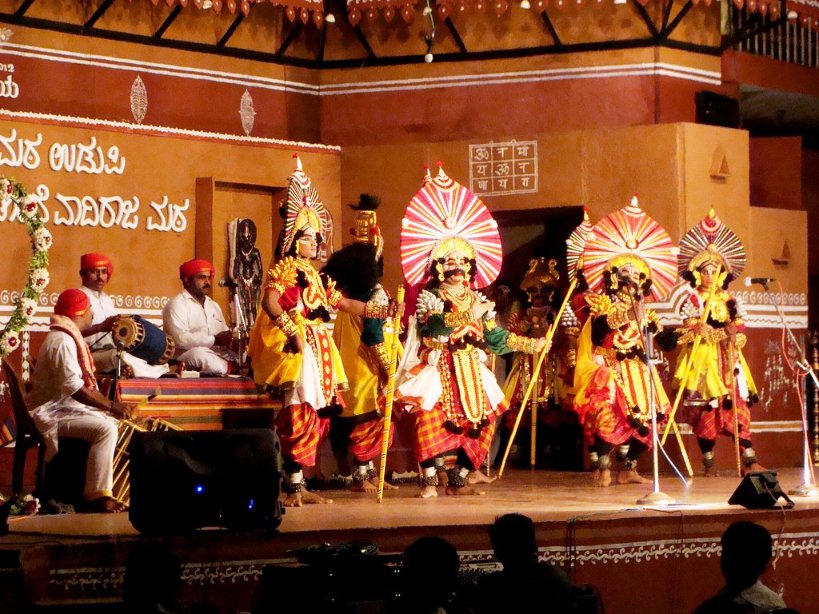
Open stage Theatre for Yakshagna
Music and Instruments
-
Maddale: The Music's Heart
An old drum called the maddale sets the beat for Yakshagana. Its steady beats give every scene energy. Parents can show their kids how music can bring stories to life in a great way. -
Taala: Little Bells That Make a Big Sound
The taala are small finger bells made from a special metal alloy. They make sounds that go with the singer's story. The bells set the mood for the music, which kids will love for its magical feel. -
Chande: The Roar of the Performance.
The chande is a big drum that is played with sticks. It makes loud, powerful sounds that fill the stage. The loud beats get people excited, and it's a fun way for parents to introduce their kids to traditional Indian instruments.
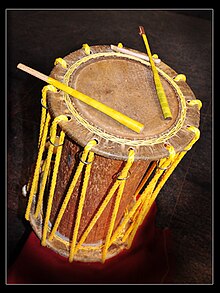
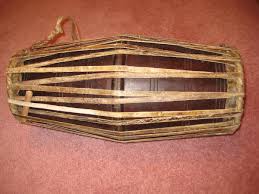
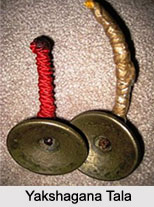
Instruments in Yakshagana (from Top to Bottom): Chande, Maddale and Taala
What Does Yakshagana Look Like
Yakshagana’s visual appeal is unmatched, with:
- Performers wear kirita and pagoda headgear, which are decorated with mirrors and stones, showing whether they are heroic or silly. Kids find it more interesting to watch Yakshagana performances when they can find these details.
- The performers wear kavacha (chest armor), buja keerthi (armlets), and dabu (waist belts). Beads called gejje on their legs make rhythmic sounds.
- Yakshagana costumes are made from wood, fabric, and canvas. They take simple materials and turn them into bright works of art. Kids can see art and tradition in a new way when they use materials in this way.
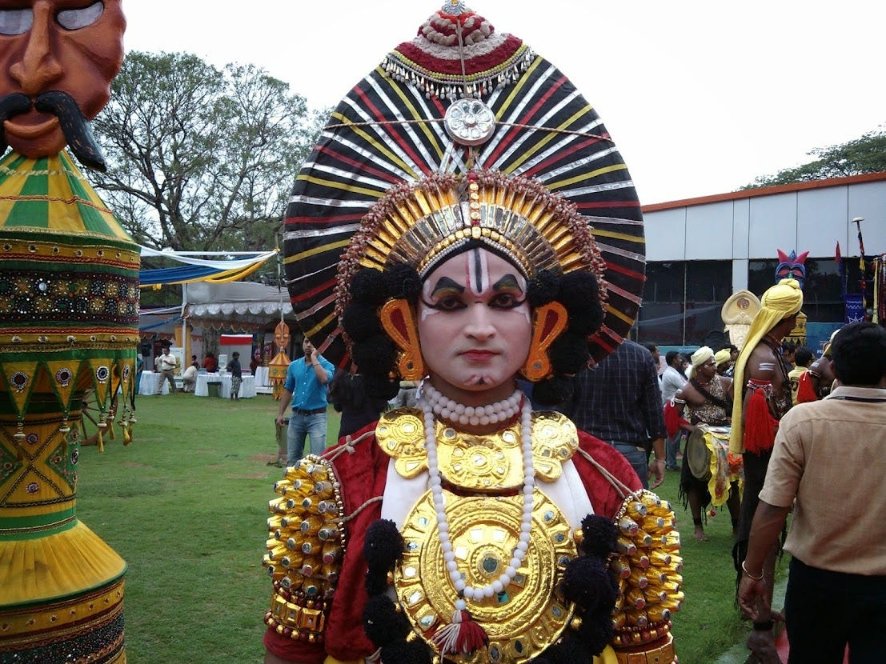
Performer in Yakshagana traditional Outfit
How Long Does it Take to Learn Yakshagana
Most students start learning Yakshagana when they are very young, usually as children, because that's when they can easily pick up the complicated techniques and traditions of the art form. The different art forms that are taught:
- Dance: Students learn the fast, rhythmic dance moves that are the foundation of Yakshagana performances. These moves require quickness, coordination, and expression.
- Acting: People who want to be actors are taught to accurately portray mythological characters by using exaggerated facial expressions, gestures, and speech to captivate the audience.
- Music: Part of the training is learning the complicated rhythms and melodies of live Yakshagana music, which is usually played on traditional instruments like the chende (drums) and maddale, as well as singing
- The time it takes to learn Yakshagana depends on the type of course and the level of training you want to achieve. To get acquainted at a beginner level, it takes around 4-5 months minimum.
Significance to Children
Yakshagana performances are a delightful way to introduce kids to ancient Indian stories and morals. Through its colorful costumes, lively enactments, and vivid dances, Yakshagana:
- Entertains young audiences with exciting tales.
- Educates them about culture, values, and heritage.
- Preserves Karnataka’s rich traditions for future generations.
With just the right amount of learning and fun, Yakshagana helps kids connect with Indian traditional stories while having a good time. Find out more about how this one-of-a-kind dance theater not only entertains but also teaches young people important cultural values.
Dollu Kunitha: The Drum Dance
Like many folk dance of Karnataka, Dollu Kunitha (in Kannada: ಡೊಳ್ಳು ಕುಣಿತ) is full of energy and movement. This happens a lot in the North Karnataka. Karnataka's Dollu Kunitha is a lively folk dance that is done to honor Sree Beeralingeshwara, a form of Lord Shiva.
Origins and History
- The devoted followers of Shiva, the Kuruba Gowda community, started Dollu Kunitha to celebrate his victory over evil.
- Ancient stories from the Halumatha Purana or the Kuruba Purana have been told orally and have been the basis for the dance for many generations. Every performance brings this rich history and tradition to life again. This rich history and tradition continue to live on in every performance -To explore more about the origins and cultural significance of Dollu Kunitha.
Performance Style
- Dollu Kunitha is a loud, lively drum dance that makes you feel excited. A group 10-12 performers stands in a circle or half-circle and beats their drums in time with the music while singing and moving.
- Dancing with heavy drums is difficult! Dollu Kunitha drummers must be very fit to carry the heavy drums and keep the pace up. Parents can inspire kids by explaining how these performers master this art through practice and effort.
- Because the drums are so heavy, traditionally only strong men could play Dollu Kunitha. But now there are lighter drums that make it easier for everyone to play, showing how the art has changed and grown over time.
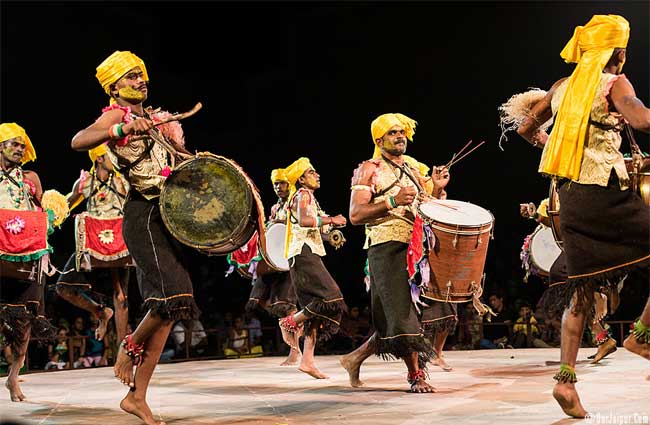
A group performing Dollu Kunitha
Musical Instruments
- Dollu Drum
The dollu is the main instrument. It is a big, strong drum that sets the beat and energy for the whole show.
- Tala
The tala beats and makes the music brighter.
- Tappadi
The tappadi is a smaller percussion instrument that makes clear beats that make the rhythm faster and more complex.
- Trumpets
The trumpets give the performance a dramatic and celebratory tone that makes it feel lively and happy.
- Gongs
Gongs make deep, resonating sounds that give the rest of the musicians a rich base and give the performance more depth.
- Flutes
The soft, airy notes of the flute add a melodic touch to the music. They balance out the loudness of the percussion instruments and make the music more harmonious.
In every temple of Beereshwar, a thick thread is tied to hooks in the ceiling and used to hang the huge dollu drum. This keeps it stable during the performance.
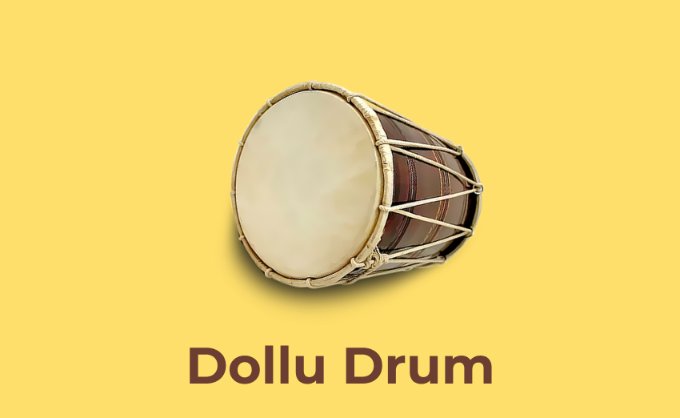
Dollu Drum the heart of Dollu kunitha
What Does Dollu Kunitha Look Like
- Dollu Kunitha is danced by 12 to 16 people, with one person leading the group. The performers move in a half-circle, following the beat of the drums and other instruments. Parents can show their kids how important it is to work together by watching how well the team works together.
- A beautiful human chain is often added at the end of the show to make it more exciting and energetic. Both kids and adults love how this tradition encourages creativity and community spirit.
- The performer wears a dollu drum around their waist and plays it with sticks and hand movements. Parents can show their kids how these different movements make the dance's powerful beats.
- Black dhotis are often worn with drapes that have tiger patterns on them. The women who perform usually wear sarees, and everyone wears anklets that make their movements rhythmic, which makes the performance interesting to look at and listen to.
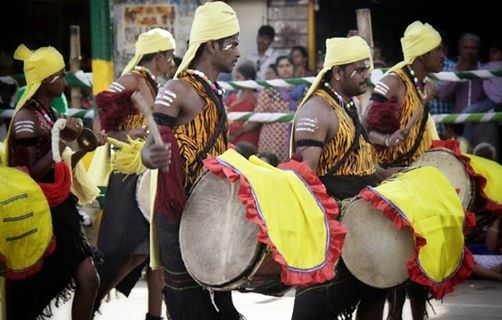
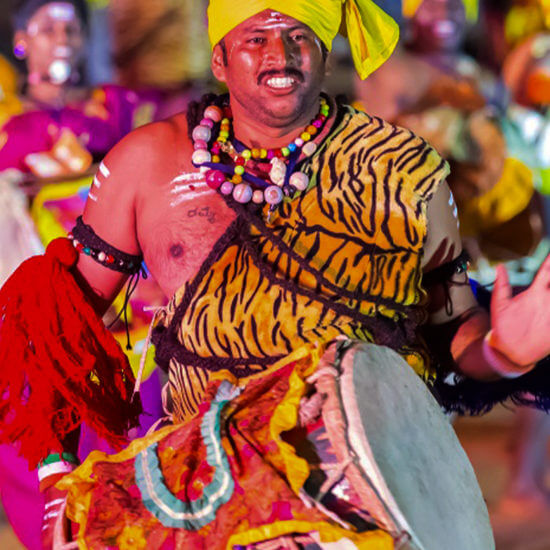
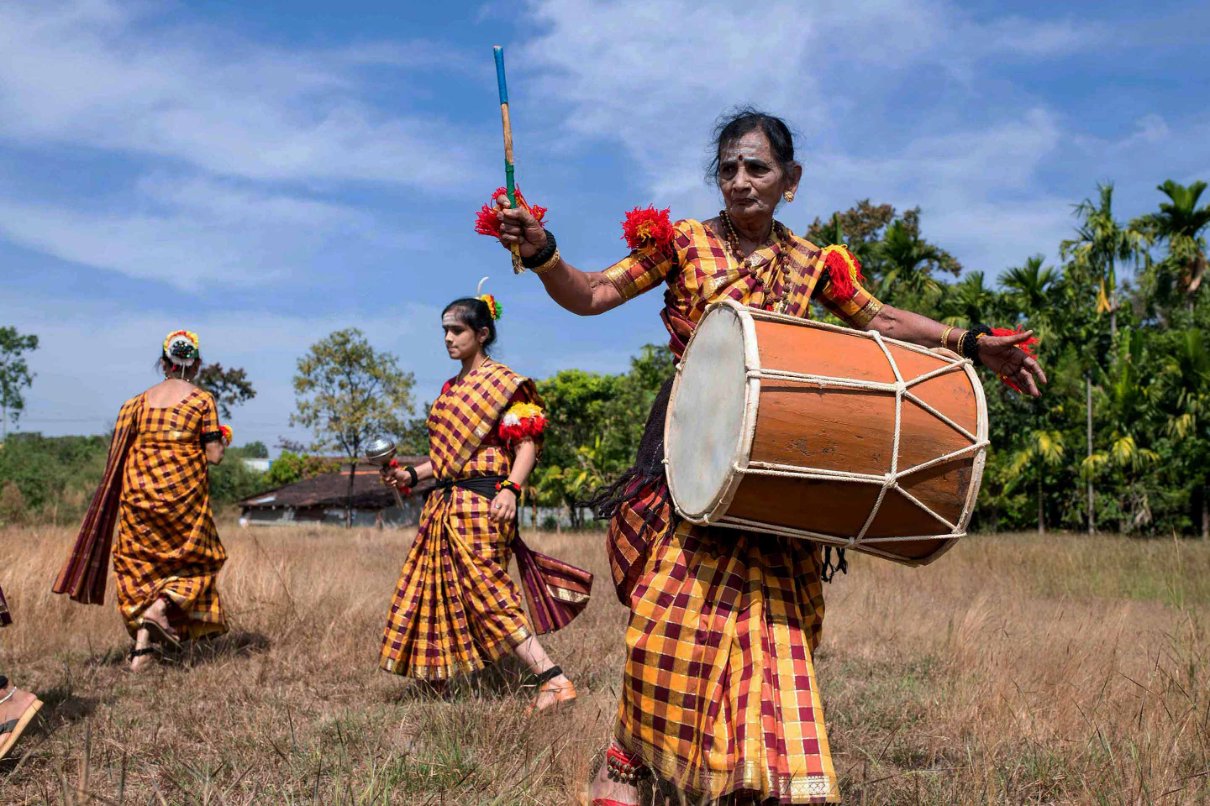
The appearance of Dollu Kunitha (from Top to Bottom) includes the group performance, male performer, female performer
Significance for Children
Dollu Kunitha's quick beats and dancers' dynamic motions can excite children because of its physical power and group coordination. The high-energy drumming and synchronized choreography engage young audiences and teach them to Karnataka's rich culture. This traditional folk dance entertains and encourages respect for the discipline and teamwork involved, helping younger generations appreciate the region's artistic traditions.
Welcome to our Dance Lab: Where Creativity Takes the Stage
Discover movement, self-expression, and innovation as we redefine dance. Enter a world where every step matters.
Kamsale
Kamsale (in Kannada: ಕಂಸಾಳೆ), also known as "Devaraguddas," is a traditional folk dance of karnataka and song from the Halumatha (Kuruba Gowda) community. It’s a beautiful way to honor Lord Mahadeshwara, a form of Lord Shiva. Parents can use this as an opportunity to share stories about devotion and faith with their kids. This folk dance is named after its instrument name "Kamsale".
Origins and History
- Kranataka's Kamsale is a percussion instrument that has been around since the 11th century. The Basava Purana and other ancient texts talk about this instrument. It makes mesmerizing rhythms that are important to the Kamsale dance.
- Lord Mahadeshwara( a form of Shiva) devotees are the ones who engage in the practice and performance of this art form.
Performing Style
- The Kamsale dance is a form of prayer and a way to ask for blessings. It is usually done in groups of 10 to 12 people, close to temples. In the songs, people tell stories, praise the Lord, and talk about the hard things that happen in everyday life. Like how Kamsale requires people to work together, teaching kids the value of teamwork and sportsmanship builds unity, discipline, and mutual respect, all of which are important in life and in dance.
- Within the Chamarajanagara region, the male members of the Halu Kuruba tribe are renowned for their proficiency in the Kamsale dance.
- Not only does kamsale dance involve rhythm and melody, but it also incorporates moves that are typically associated with martial arts. An exciting and dynamic touch is added to the dance by the performers, who demonstrate both offensive and defensive maneuvers.
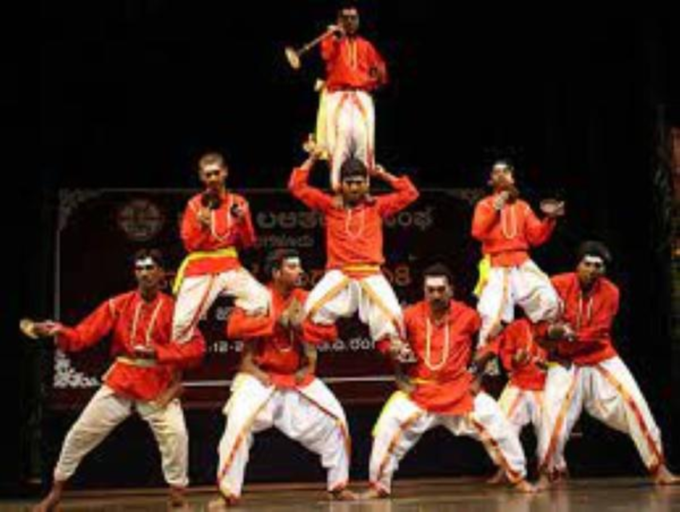
A group performing Kamsale
Music and Instruments
- The Kamsale is a musical instrument that consists of two brass metal plates that are circular in shape and produce sound when they are tapped together.
- It is an excellent method for teaching children how vibrations can produce sound.
- When the metal plates collide with one another, they vibrate, which results in the production of the melodic and rhythmic tones that are used in the dance. Parents can explain this to their children.
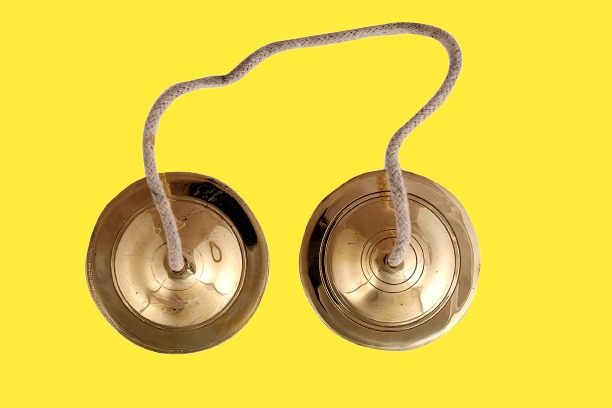
Kamsale Musical Instrument
What Does Kamsale Look Like
- Kamsale dance is a mix of devotion and martial skill. The instruments are moved around the dancer's body in complex patterns that show both skill and speed.
- Those who perform the kamsale do so while wearing colorful costumes and holding the kamsale in both hands.
- The aggressive moves and patterns of offense and defense in Kamsale dance come from the martial arts traditions of the Kuruba people who mostly perform it.
- The number of artists ranges from 3 to 8. There will be between 8 and 12 artists if songs are played during the Kamsale.
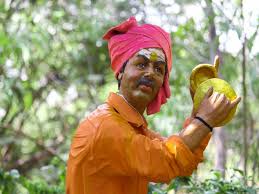
General costume and instrument for Kamsale
Significance to children
Students can learn about India's culture through kamsale dance, which is a lively mix of music, martial arts, and stories. Kids can learn and have fun at the same time because it encourages them to be creative, work together, and be interested in traditional art forms. Explore the vibrant world of Kamsale dance, where music, movement, and stories work together to help you learn and have fun.
Veeragase
Veeragase (in Kannada: ವೀರಗಾಸೆ) also known as Guggla is a narrative folk dance of Karnataka that is based on Hindu mythology. It is done during festivals like Karthika and Shravana. It's an important part of the Veerashaiva Lingayat celebrations and the big Dasara procession in Mysore. It shows off lively dances and cultural traditions.The Veeragase dance is one of the oldest traditional dances in Karnataka.
Origins and background
- Veeragase has a lot to do with the Veerashaiva tradition, which is a Shivite group that worships Lord Shiva as the most important god.
- This dance comes from Veerashaiva groups that are known for their bravery and devotion. They celebrate the brave actions of warriors and mythical figures.
- The dance is mostly about things like how good wins over evil, how brave warriors are, and how divine Lord Shiva's grace is.
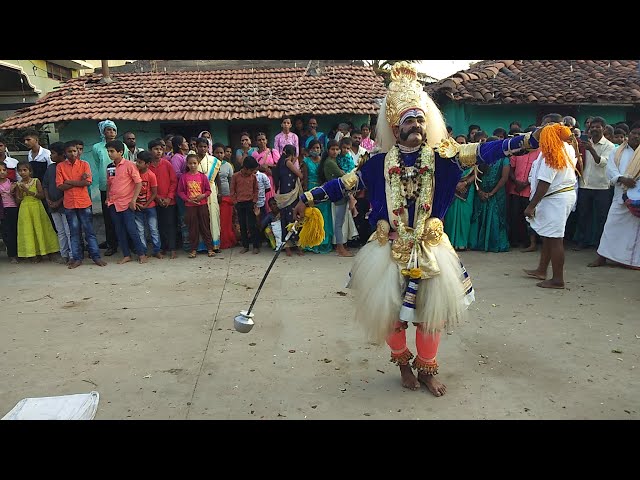
Veergase Performance in a Village
Performance style
- Veeragase is usually performed outdoors, with the dancers surrounded by an audience.
- This traditional dance is performed by Jangama people from the Veerashaiva or Lingayat community, also called Maheshwaras.
- Known for its gymnastic and intense movements, Veeragase is a thrilling performance to watch. Parents can point out how the dance showcases both physical strength and creativity, inspiring kids to appreciate dedication and skill.
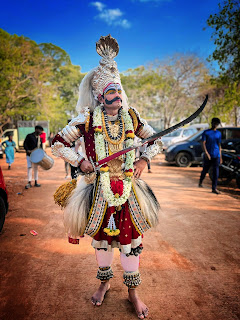
Traditional dress for Veergase
Music and Instruments
-
Sambal
It is made of two wooden drums that are joined at the side and have skin heads stretched over the top. It is played with two sticks made of wood, one of which has a round end.
-
Dimmu
A traditional percussion instrument that provides music for the dance
There are other instruments also like Cymbals, Shehnai, Karadi etc which serves the purpose of lending music for the dance.
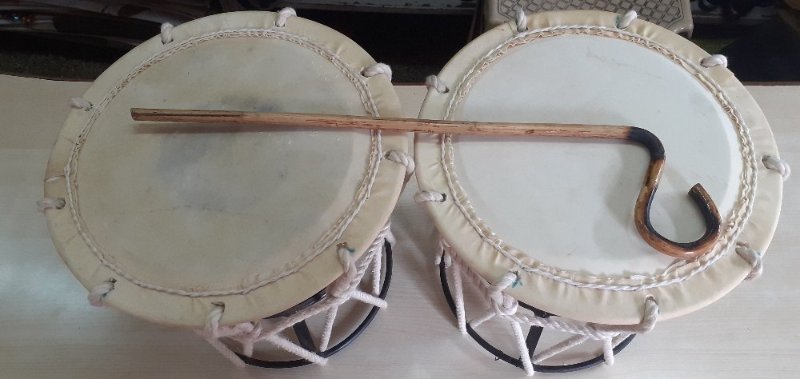
Sambal
Significance for Children
- The fast and gymnastic moves in Veeragase show how important discipline, strength, and practice are, which encourages kids to be dedicated to their activities.
- Children learn about India's rich traditions through Veeragase. They learn about Hindu mythology and the values of bravery, devotion, and the victory of good over evil.
Huttari: The Dance of the Harvest Festival
One of the most well-known Karnataka folk dances is the Huttari or Hattari dance (in Kannada: ಹುಟ್ಟಾರಿ ನೃತ್ಯ). The Kodvas people who live in the Coorg region of Mysore mostly do it during harvest time. When this dance is done, there is also a festival with the same name. Men are the ones who usually do this dance, and they dress very nicely for it. Many people in Coorg (Kodagu) celebrate the Huttari festival, which is held every year to honor the rice harvest. It is thought to be the biggest of the three festivals. In most years, it's celebrated in November or December.
Origin and Background
- The Kodva people who lived in the Coorg region were the ones who first developed the Huttari dance form in Karnataka.
- Several decades ago, this folk dance was first performed, and ever since then, the tradition has been carried on.
- During the Huttari festival, this dance is actually performed by the participants. wherein the harvesting season is celebrated as a thanksgiving ceremony to the gods for the great harvest, and wherein the harvesting season marks the arrival of the harvest.
Performance Style
- These dances are performed by men dressed in exquisite and colorful attire.
- This type of dance is not performed by females ( except on some occasion) .
- In males, one can observe them dancing to the rhythm of drum beats and pipes. As a matter of tradition, dancers have been observed holding shields in their hands; however, in contemporary times, canes have taken the place of shields.
- A large ring or circle is formed in order to coordinate the dance's numerous movements and steps, which are performed in a coordinated manner. The tandav style is the source of inspiration for a few of the steps that are executed in this dance form.
- They perform footwork by first elevating the left foot, then lifting the right foot while maintaining balance, and finally jumping vigorously.
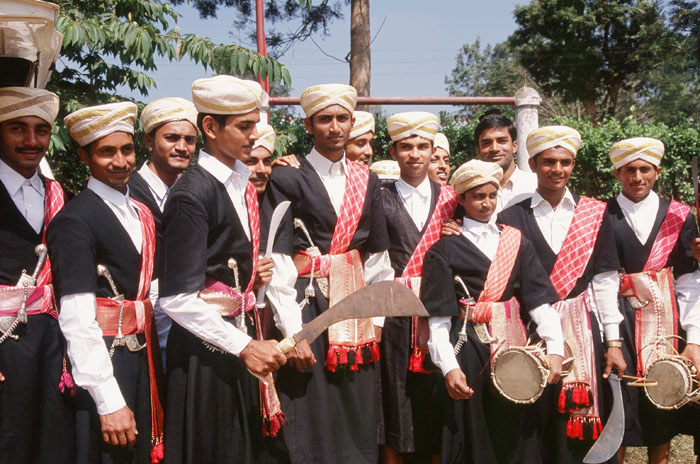
Men costume for Huttari during Harvest season
Music and Instruments
- A small drum and a stick are used to beat the drum, which serves as both the music and the instrument for this type of dance.
What Does Huttari Look Like
- Huttari is a cheerful folk dance from Coorg that is only done by men wearing bright traditional clothes like black tunics, turbans, and white pants.
- Huttari dance uses lively moves that come from the tandav style. Artists balance on one foot while jumping with the other, which makes for an exciting and powerful performance.
- Most of the time, the dancers move in perfect sync with the beats of the drums and pipes, making a big ring or circle.
- In the show, dancers held shields, but these days, they usually hold canes.
- Huttari is danced in open fields, which give the dance a natural setting. Kids can be told to look for links between nature, traditional clothing, and cultural expressions in this one-of-a-kind art form
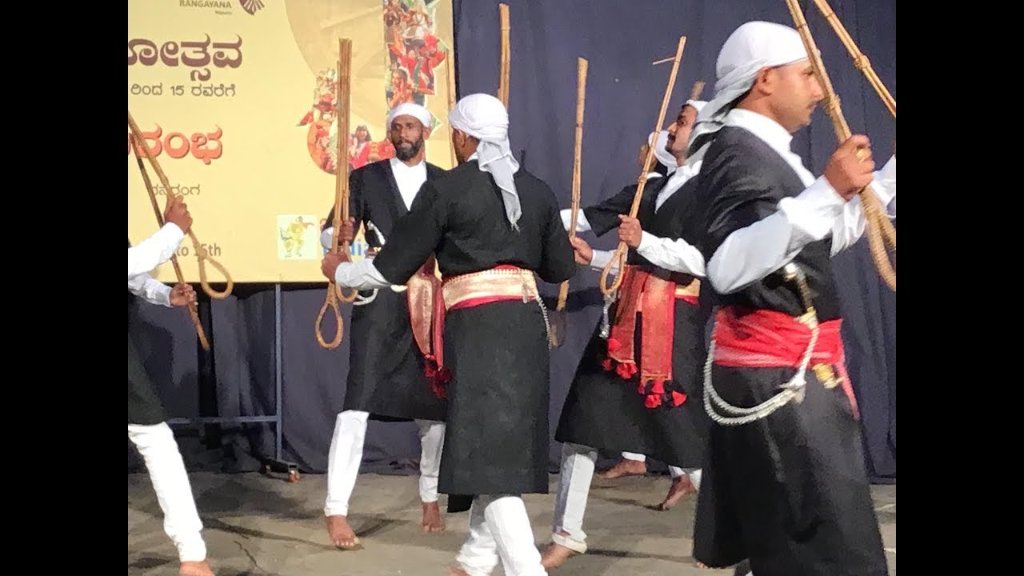
Performers of Huttari dance
Significance for Children
Young children find it even more exciting because of the happy atmosphere and Huttari's dancing. The dance shows them how culture is passed down from one generation to the next and helps them understand how important it is to celebrate and be a part of a community. Find out how Huttari brings togetherness and tradition into every performance.
Like what you read? Then, kindly share this blog with your friends who are interested in “Folk dances of Karnataka” or “Karnataka’s Traditional Dances”
Related Blogs
Panthi Dance: Explore the origins of Panthi dance, uncovering its rich historical roots and cultural significance.
Folk Dance of Chhattisgarh: Uncover the energetic folk dances of Chhattisgarh, celebrating the area's cultural depth through its traditional dance forms.
History of Folk Dances in India: Learn about the different folk dances in India and their history through our latest blog.
Difference Between Folk Dance and Classical Dance: Get to know about the differences between folk dance and classical dance through our blog.
Frequently Asked Questions
Bharatanatyam, a classical dance form from Tamil Nadu, is also the official classical dance or state dance of Karnataka. It is often performed as a solo dance that tells Hindu mythology stories using Natya, Nritya, and Nritta, known for its intricate footwork, expressive gestures, and graceful movements. Temples and cultural festivals in Karnataka showcase the dance form. 1
The traditional dance form performed by the Tulu-speaking people of Karnataka is the Buta Kola. Karnataka's Tulu-speaking communities' Buta Kola dance is a great way to introduce children of ages 3-14 to the region's rich culture. Buta Kola performers wear colorful costumes, masks, and body paint as deities or spirits. Drumming and chanting accompany the dance, creating a festive, captivating atmosphere. 2
Traditional Udupi Karnataka dance is kangilu combines culture and exercise. Parents worried about how extracurricular activities will affect their children's studies should know that Kangilu performances can help them grow. The dance has lively movements, rhythmic drumming, and colorful costumes, but it's mostly performed during festivals, so it doesn't interfere with schoolwork. Experiences like Kangilu can boost creativity, focus, and teamwork, which can help them succeed academically and personally.. 3
Nirupama Rajendra- She is a Leading Karnataka classical dancer and choreographer Nirupama Rajendra is a Bharatanatyam dancer and choreographer. Her graceful performances and promotion of Bharatanatyam have earned her many awards in classical dance.4
Imran Sardhariya - He is a Bharatanatyam dancer and choreographer Imran Sardhariya is well-known in classical dance. His precise and expressive performances have enriched Karnataka classical dance.
Mithun Shyam - He is a Karnataka Bharatanatyam dancer, is known for his technique and charisma. Innovative choreographies and new perspectives on classical dance have earned him praise.
CBSE Schools In Popular Cities
- CBSE Schools in Bangalore
- CBSE Schools in Mumbai
- CBSE Schools in Pune
- CBSE Schools in Hyderabad
- CBSE Schools in Chennai
- CBSE Schools in Gurgaon
- CBSE Schools in Kolkata
- CBSE Schools in Indore
- CBSE Schools in Sonipat
- CBSE Schools in Delhi
- CBSE Schools in Rohtak
- CBSE Schools in Bhopal
- CBSE Schools in Aurangabad
- CBSE Schools in Jabalpur
- CBSE Schools in Jaipur
- CBSE Schools in Jodhpur
- CBSE Schools in Nagpur
- CBSE Schools in Ahmednagar
- CBSE School In Tumkur

Call Us to know more about Orchids
Swipe Up

















